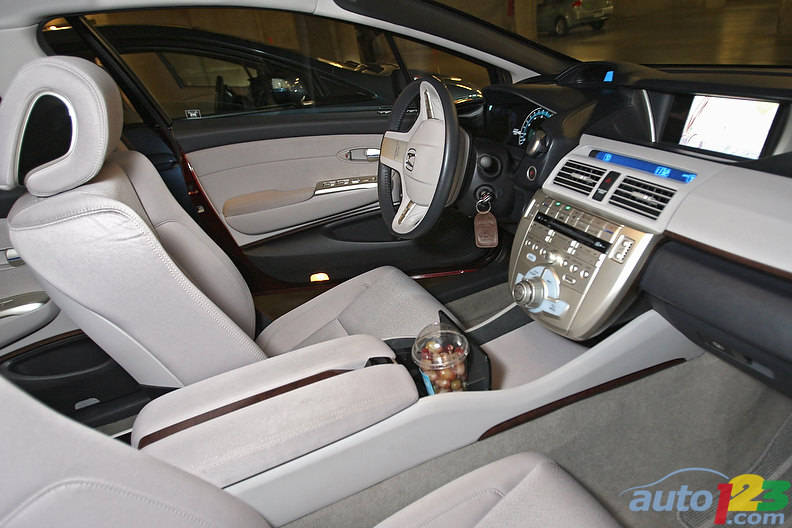The instruments flare to life, and all is silent. And yet, at the slightest pressure on the gas, the car unhesitatingly starts forward. We finally got our first chance to try out the FCX Clarity, Honda’s hydrogen car already available as a test version in Japan and the U.S.
The Clarity is the closest version to reality that Honda can put forward. The all-electric vehicle is powered by fuel cells, themselves supported by pressurized hydrogen.
In the back, a lithium-ion battery pack is capable of storing excess current and, if needed, provide extra power. Thus equipped, the car has an operating range of around 400 km, and best of all, it offers a driving experience similar to that of an everyday car.
A short jaunt through LA
The FCX Clarity is one of the numerous vehicles available to the media at the Los Angeles Auto Show for a brief road test through the streets of LA. We can of course forget about testing that operating range or the highway acceleration figures, but a short drive through the city streets was enough to prove the viability of this proposition.
Behind the wheel, the rather conventional dash board adds a group of instruments that provide information on the power provided by the hydrogen as well as the quantity of fuel burned. At first, the abundance of details is overwhelming, but they quickly prove useful in mastering the car.
As for the rest of the Clarity, it comes dangerously close to a standard sedan, except for a centre console made prominent by the fuel cells it houses. The lithium-ion battery pack is tucked away under the rear seats, while some of the trunk space was sacrificed to make room for the hydrogen tank.
How it works
To power the electric engine, the Clarity uses fuels cells that deliver 100 kWh of energy. These are supported by the rear batteries, which produce the same amount of power. All that with only 5,000 lbs of hydrogen pressure. This is what really sets the Clarity apart, as its rivals need as much as 10,000 lbs to produce the same power and ensure the same operating range.
The reason for this choice, and advantage, is simple: hydrogen charging stations will never be able to provide that much pressure, and manufacturers need to consider the future development of a commercial network.
“Our technology is ready to be marketed. If we increase our production volumes, we could equip an entire fleet. We even manufacture our own battery packs, and we’re ready to take the leap. All that’s missing is a charging network,” said the Honda spokesperson.
I do have to point out that this spokesperson politely but firmly declined to comment on the durability of the system, and he gave only partial answers to the questions regarding the system’s reaction to cold temperature. “Our batteries warm up faster, but they need more energy in the cold. This will certainly have an impact, but I cannot specify what kind of impact,” he simply answered.
Behind the wheel
Once we’d assimilated the technology, it was time to jump behind the wheel for our road test. The Clarity accelerates with unparalleled smoothness, in a completely linear and predictable way, even when you jam down on the pedal. I did find myself wishing for a little more torque on takeoff, but the current version will satisfy our urban needs.
Once on the road, the driving experience is stunning. The car handles like a sedan, but because of the layout of the system and the integration of electric engines, it benefits from an extremely precise steering system and a turning radius worthy of a bicycle. It can dodge anything and easily zip through town despite is girth, which places it above the Honda Civic for example.
And here’s some more good news: even though the Clarity also features a regenerative braking system, you don’t feel a thing. The electric engine helps with the braking and absorbs the sometimes unpleasant sensation felt when stopping in other hybrid vehicles using the same type of setup.
Conclusion
Of course, it’s not a few kilometres travelled through the streets of LA that will allow us to judge the real merit of a car nor its fuel consumption ratings. But I have to admit that the FCX Clarity seems to come close to several production vehicles and uses a seemingly viable system, at least under the hot California sun. It remains to be seen if it could survive in the Great White North.






